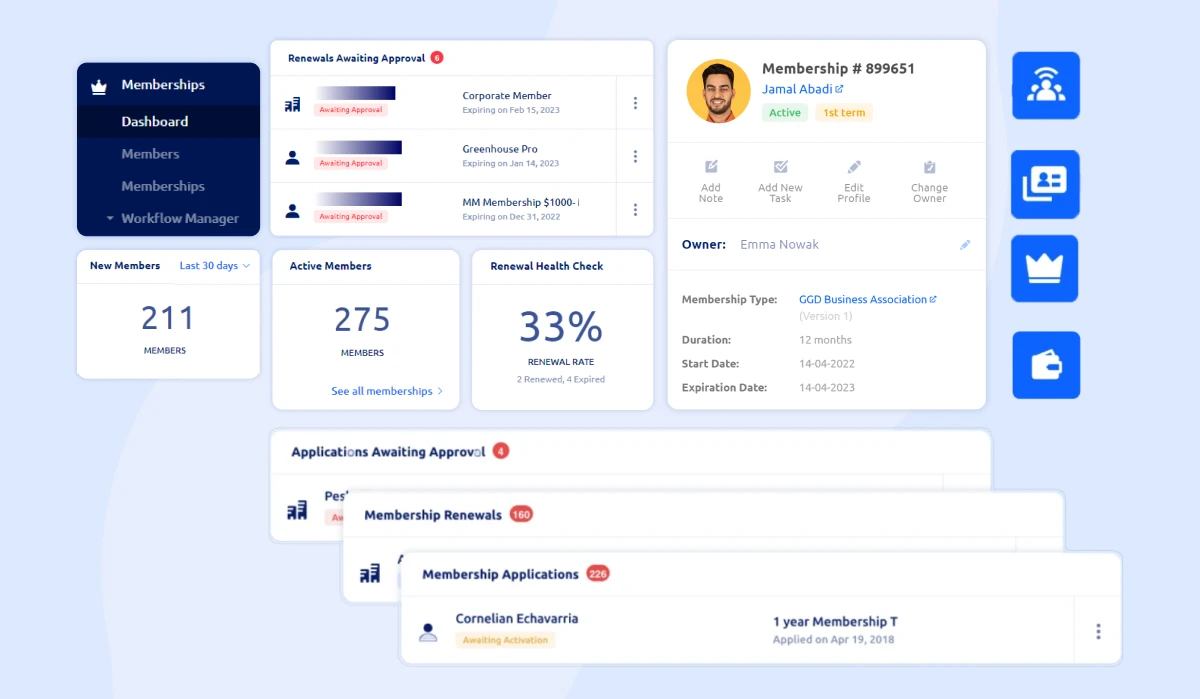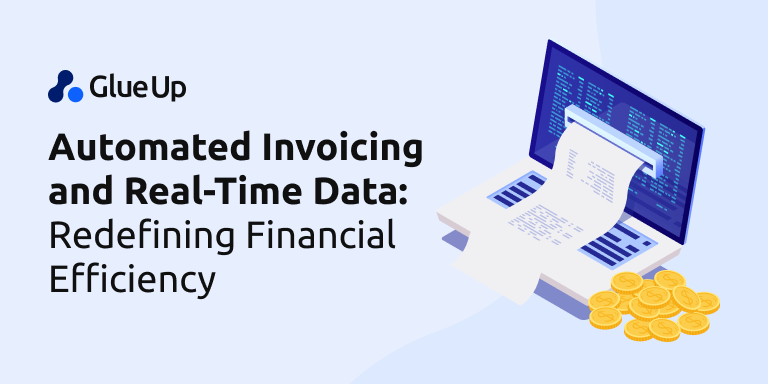
Not all analytics are created equal. Although all AMS systems provide analytics, the quality of those analytics truly matters. It's important to focus on obtaining useful and intelligent analytics rather than getting overwhelmed by too much data and minor details that aren't helpful.
As Veda Bawo, Director of Data Governance at Raymond James, says, “You can have all of the fancy tools, but if your data quality is not good, you're nowhere.” Therefore, when collecting analytics from your AMS, it's better to focus on quality over quantity. However, this can be tricky.
Associations often struggle with identifying the most relevant metrics and might end up selecting the wrong data, which can lead to problems later on.
To help you avoid these inconveniences and understand the importance of intelligent analytics, this blog will provide detailed insights into AMS intelligent analytics, helping you focus on the most valuable information. Read on to gain a deeper understanding of this significant topic.
Key Takeaways
- Prioritize obtaining useful and intelligent analytics rather than being overwhelmed by too much data and minor details. Quality analytics lead to better decision-making and actionable insights.
- Intelligent analytics uses sophisticated algorithms to provide insights into not only what happened but also why it happened, what is likely to happen next, and what actions to take.
- Successfully implementing intelligent analytics involves defining key metrics and KPIs, integrating data from various sources, and fostering a data-driven culture within the organization.
- Emerging trends include AI-powered segmentation, predictive analytics, chatbots, and real-time decision-making.
- Glue Up AMS, an AI-powered platform, offers extensive analytics capabilities, including membership metrics, event metrics, surveys, and real-time reports; this makes it an effective tool for associations to leverage intelligent analytics.
What is Intelligent Analytics
What exactly is intelligent analytics? This is the first question that pops up in most minds when they first hear about it. It's not an alien concept. In simpler terms, intelligent analytics goes beyond traditional reporting and analysis.
It capitalizes on sophisticated algorithms to tell you not only what happened but also why it happened, what's likely to happen next, and even suggest the best course of action.
For example, instead of spending hours over spreadsheets, your association management software (AMS) uses intelligent analytics to automatically identify patterns in member behavior. It can predict which members are at risk of churn, recommend personalized outreach strategies, and even suggest the most relevant content to keep them engaged.
Why Intelligent Analytics Matters?
Intelligent analytics isn't something futuristic; as discussed earlier, it's already here and rapidly becoming the norm in the association space.
Here's why it matters:
- A Data-Driven Culture: For years, associations have been data-rich but insight-poor. Intelligent analytics bridges this gap, creating a data-driven culture where decisions are based on concrete evidence, not assumptions. Statistics show that data-driven organizations are now 23 times more likely to acquire customers, 6 times more likely to retain customers, and 19 times more likely to be profitable.
- Unveiling Hidden Gems: Your data can contain hidden gems that provide valuable insights about member preferences, industry trends, and untapped opportunities. Intelligent analytics identifies these gems, empowering associations to make informed choices that drive growth and impact.
- Personalized Engagement: The days of one-size-fits-all communication are over. With intelligent analytics, associations can personalize member experiences, automatically tailoring content, event recommendations, and communication styles based on member demographics and engagement patterns.
How to Implement Intelligent Analytics in Your AMS
Intelligent analytics for your AMS sounds impressive because it can uncover hidden trends in your member data, predict future needs, and make data-driven decisions that propel your association forward, which is exciting and time-saving. But then the question hits: how can you actually implement this in your AMS?
Here's how you can transform your AMS from a data silo into a strategic powerhouse:
Choosing the Right Tools and Platforms
The first step in implementing intelligent analytics is to choose the right tools and platforms.
Here are some considerations to keep in mind:
Intelligent Analytics-Enabled AMS: Select an AMS that provides built-in analytics features. Confirm that the AMS supports advanced analytics capabilities such as AI, machine learning, and data visualization. Glue Up is an example of an AMS that fits this description. It is the first AI-powered cloud management software designed to streamline association management. The analytics it provides will improve your member acquisition, retention, member engagement, event engagement, marketing, and campaigns. For further information, you can book a demo to explore its features.
Visualization Tools: Choose platforms that offer advanced data visualization features, allowing you to create interactive and shareable dashboards. This helps in making data insights easily understandable and accessible to your team.
User-Friendly Interface: Select platforms that are easy to use and require minimal training. A user-friendly interface ensures that your team can quickly adapt to the new tools and start utilizing analytics effectively.
Scalability: Assure that the tools and platforms you choose can scale with your association's growth. This includes handling an increasing amount of data and supporting more advanced analytics as your needs evolve.
Cost-Effectiveness: Consider the cost of the tools and platforms, including any subscription fees, maintenance costs, and additional expenses for training or support. Choose solutions that provide the best value for your investment.
Security and Compliance: Make sure the tools you select adhere to industry standards for data security and compliance. This is crucial for protecting sensitive member data and maintaining trust.
Setting Up Data Integration
This is the second step of implementing intelligent analytics. Data integration is a must for combining information from various sources into a unified system. The integration allows you to analyze comprehensive data sets and derive meaningful insights.
Here are some key considerations:
Unified Data Sources: Integrate all relevant data sources, including member databases, event management systems, marketing platforms, and financial systems. Comprehensive data collection is mandatory for accurate and effective analysis.
Data Cleaning and Preparation: Establish that the data being integrated is clean, consistent, and free from errors. Data cleaning and preparation are vital steps to maintain data quality and reliability.
APIs and Connectors: Utilize APIs and connectors to automate data flow between different systems. This verifies that data is continuously updated and available for real-time analysis.
Data Security and Privacy: Implement robust security measures to protect sensitive data during integration and certify compliance with relevant data privacy regulations to maintain trust and integrity.
Defining Key Metrics and KPIs
When implementing intelligent analytics, it's important to define metrics and KPIs to measure success and drive improvements. Setting realistic goals and being practical in your approach is essential.
Statistics show that 23% of organizations use data analytics to track operational KPIs, while only 10% use both quantitative and qualitative success metrics. These numbers are relatively low, indicating that many associations either rely on assumptions, lack confidence in data, or are receiving irrelevant data.
Setting clear and actionable metrics before implementing intelligent analytics can help your association use data effectively to achieve its strategic objectives and improve overall performance.
Case Studies of Successful Implementations
We have talked a lot about intelligent analytics; now it's time to discuss real examples. Seeing how other associations have applied these concepts can provide valuable insights and inspiration for your own implementation.
Let's find out how associations have successfully used intelligent analytics to drive their success and achieve their goals:
Case Study 1: Enhancing Member Engagement
Founded in 2002, the Society for Event Managers, known as Taller Events in the Netherlands, is a distinguished trade organization that caters to event managers employed by corporate companies, semi-government, and non-profit institutions.
For Taller Events, the transition to Glue Up introduced a suite of functionalities that profoundly enriched their operational and member engagement strategies. Among the numerous features Glue Up offers, society found particular value in the comprehensive dashboards and advanced CRM capabilities.
The dashboards within Glue Up became a highlight for the organization, providing an invaluable overhead view of critical data points. This feature enabled a deeper insight into membership trends by tracking metrics such as engagement levels, membership churn rate, and event attendance.
Armed with these analytics, Taller Events could proactively reach out to members, especially those who hadn't engaged recently. This proactive approach nurtured a more connected community and significantly improved member engagement.
This example demonstrates how intelligent analytics can transform member engagement strategies, providing actionable insights that help organizations build stronger, more connected communities.
Case Study 2: Optimizing Event Management
The Surf Project, a faith-based charity located in the heart of the small town of Portrush in Northern Ireland, UK, works with young people and adults to help them discuss and explore life and faith in an open environment.
In their quest for a solution to house all their contacts, track registrations, sell tickets, and manage finances, The Surf Project discovered Glue Up. The most significant benefit they found was Glue Up's ability to track event registrations and tickets, consolidating all necessary information into one easily trackable place.
Glue Up enabled The Surf Project to monitor participant engagement over time by tracking which events attendees participated in. This capability allowed the organization to tailor their events to better meet the needs of their participants.
As The Surf Project grew more accustomed to the platform, they began customizing it to fit their specific requirements, making event management more straightforward than ever. The ease of setting up and managing events meant that their events coordinator could focus on being present with participants rather than worrying about event logistics.
This example illustrates how intelligent analytics can streamline event management, allowing organizations to enhance attendee experiences and improve overall event efficiency.
Trends in Intelligent Analytics for Associations

The field of intelligent analytics is constantly changing, and here are some important trends shaping the future of association management:
- AI-Powered Member Segmentation: Intelligent analytics powered by AI can create dynamic segments based on real-time member behavior, needs, and interests. This allows for hyper-targeted communication and program development. According to Gartner, 35% of data analytics investments are in artificial intelligence, which means segmentation will continue to improve.
- Predictive Analytics for Retention: Member churn is a constant concern. Associations are now using intelligent analytics to predict which members are most likely to leave and implement proactive retention strategies.
- The Rise of Chatbots and Virtual Assistants: Intelligent chatbots powered by AI are becoming a game-changer for member engagement. These bots can answer basic questions, troubleshoot issues, and even personalize member journeys.
- Integration with Other Technologies: The integration of intelligent analytics with other technologies, such as CRM systems, marketing automation platforms, and social media tools, allows for a seamless flow of data and provides a more holistic view of member interactions, enabling more informed decision-making.
- Real-Time Analytics and Decision-Making: The ability to analyze data in real-time is becoming more accessible and valuable. Associations can now make data-driven decisions on the fly, responding quickly to trends and changes in member behavior. This agility helps organizations stay ahead of the curve and maintain a competitive edge.
- Automation and Efficiency: Automating routine tasks through intelligent analytics significantly improves operational efficiency. Data collection, reporting, and analysis become more streamlined, freeing up valuable time and resources and allowing staff to focus on strategic initiatives and member engagement.
These are just a few examples, and the possibilities are truly endless. As technology advances, we can expect even more sophisticated, intelligent analytics solutions tailored specifically to associations' needs.
Tips for Leveraging Intelligent Analytics in Your Association

In a recent survey of analytics leaders, 67% said organizational culture is the biggest barrier to becoming a data-oriented company. To successfully implement intelligent analytics, it's essential to cultivate a data-driven culture within your organization. Here are some tips to achieve that:
- Start Small, Scale Up: Don't try to boil the ocean. Begin with a specific goal, like enhancing member engagement, and capitalize on intelligent analytics to achieve it. Once you see the results, you can expand your use cases.
- Invest in Data Quality: Garbage in, garbage out. Certify that your data is accurate, complete, and well-organized to get the most out of your intelligent analytics tools.
- Empower Your Team: Don't view intelligent analytics as a replacement for human expertise. Instead, see it as a tool to empower your staff. Train your team members to interpret the insights generated by the system and use them to make informed decisions.
- Focus on Actionable Insights: Don't get lost in the data storm. Focus on extracting actionable insights that can be translated into concrete strategies and improvements for your association.
- Embrace a Culture of Experimentation: The best way to learn is by doing. Don't be afraid to experiment with different intelligent analytics tools and techniques. Track your results and iterate based on what works best for your organization.
Conclusion: Glue Up AMS – Your Partner for Cutting-Edge Intelligent Analytics

Implementing intelligent analytics effectively requires an efficient AMS. Glue Up, an AI-powered AMS, offers comprehensive analysis and metrics for tracking and decision-making.
Let's explore these features:
- Membership Metrics: Track key metrics such as member acquisition, retention rates, engagement levels, and churn rates. Gain insights into membership trends and behavior to tailor your strategies accordingly.
- Event Metrics: Analyze event attendance, ticket sales, engagement levels during events, and post-event feedback. With data-driven insights, optimize your event planning and execution.
- Surveys and Real-Time Reports: Conduct surveys to gather valuable feedback from members and participants. Generate real-time reports to monitor trends and make informed decisions promptly.
- Finance Metrics: Monitor your financial health with metrics such as revenue, expenses, and cash flow. Assure your financial strategies align with your association's goals.
- Community Metrics: Measure community engagement through activity levels in online communities and member interactions. With these insights, shape a vibrant and active community.
- P&L Reports: Generate Profit and Loss reports to assess your association's financial performance. Make strategic decisions based on accurate and comprehensive financial data.
Glue Up AMS is a comprehensive tool for intelligent analytics, assisting associations in achieving growth, engagement, and success. To explore its features further, you can book a demo.
Frequently Asked Questions
Is Intelligent Analytics Too Expensive for My Association?
The good news is that intelligent analytics solutions are becoming more affordable and accessible for associations of all sizes. Many AMS providers now offer built-in intelligent analytics features or integrate them with third-party solutions.
Do I Need a Data Scientist to Use Intelligent Analytics?
The beauty of intelligent analytics is that it's designed to be user-friendly. Most solutions offer intuitive dashboards and reports that don't require advanced technical expertise.
How Can I Get Started With Intelligent Analytics?
The first step is to assess your association's current data management practices. Are you collecting the right data? Is it clean and organized? Once you have a solid data foundation, explore AMS solutions that offer built-in intelligent analytics features.
Courses in Intelligent Analytics
If you want to learn more about intelligent analytics, you can join the workshop offered by Azure Marketplace: Intelligent Analytics: 1-day Virtual Workshop. This workshop provides an in-depth understanding of intelligent analytics, covering key concepts, tools, and techniques.
Participants will gain practical knowledge that can be directly applied to their organizations. This is a valuable opportunity to enhance your skills in the field of intelligent analytics.



